Some of you may know about the OV-10 Bronco. The Marines and AF TACP's used them
http://www.aviationspectator.com/more-aviation-photos?page=495

Today I found this little gem:
http://www.airspacemag.com/military-aviation/deadliest-night-fighter-korea-180951418/?page=3
The link below has 4 photos showing the method described in the Smithsonian article. Imagine doing this with a rig, ruck, and weapon.
http://www.ejection-history.org.uk/Aircraft_by_Type/F_3D_Skynight/Douglas_F3.htm
No doubt that other unique platfoms exist.
http://www.aviationspectator.com/more-aviation-photos?page=495

Today I found this little gem:
http://www.airspacemag.com/military-aviation/deadliest-night-fighter-korea-180951418/?page=3
Jerry Dixon recalls an exercise he flew during which raiders—recon Marines—found an unexpected use for the Skyknight’s escape chute. He was deployed to the Philippines for the exercise in February 1958. Assigned the role of aggressor squadron for the maneuvers, Marine planners used Whales for a clandestine insertion of Marine commandos behind “enemy” lines. Dixon was part of a flight of four Skyknights that flew night formation with a recon Marine occupying the right seat of each airplane.
Approaching the drop zone, the raiders got out of their seats and slid into each airplane’s escape chute, keeping their heads still in the cockpit. “When we got to the drop zone, the formation leader made the prearranged signal to drop, I tapped my raider on the head, and he was gone like a shot,” says Dixon, still in awe after all these years. “You talk about a set of balls to do what those guys did.” Dixon later heard that two of the commandos broke bones landing in the jungle.
The link below has 4 photos showing the method described in the Smithsonian article. Imagine doing this with a rig, ruck, and weapon.
http://www.ejection-history.org.uk/Aircraft_by_Type/F_3D_Skynight/Douglas_F3.htm
No doubt that other unique platfoms exist.






